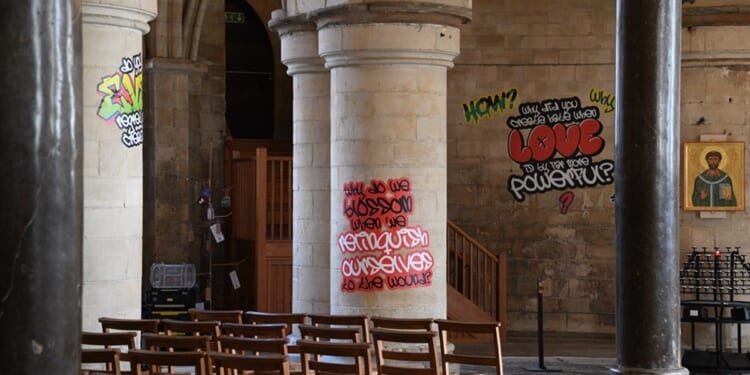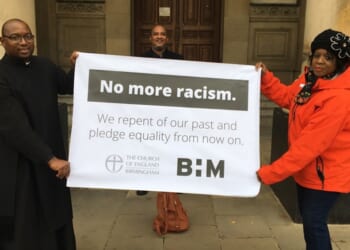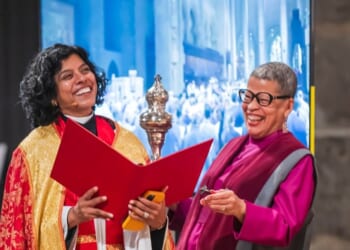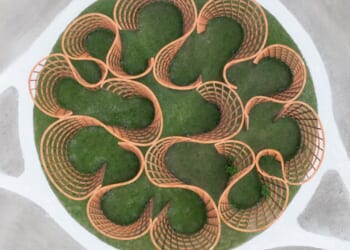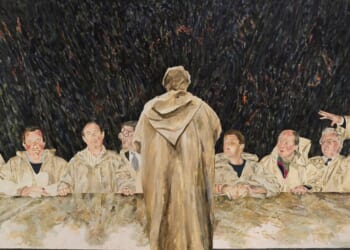A GRAFFITI-STYLE installation in Canterbury Cathedral has drawn strong public criticism before it has officially opened. The Dean, the Very Revd David Monteith, has acknowledged that people will either love or hate it, but that this was part of its “unfiltered” message.
The temporary installation, Hear Us, which opens on Friday, is a collaboration between the poet Alex Vellis, and the curator, Jacquiline Creswell. It is formed of large graffiti-style graphics stuck (rather than sprayed on) to walls and pillars, of challenging questions directed at God, such as, “Are you there?” “Why did you create hate when love is by far more powerful?” “Does everything have a soul?” “Does our struggle mean anything?”
The questions came out of workshops with marginalised communities. “Language is the people who speak it, and graffiti is the language of the unheard,” Mr Vellis said. “By temporarily putting graffiti on the inside of Canterbury Cathedral, we join a chorus of the forgotten, the lost, and the wondrous.”
Criticism came swiftly from the US Vice-President, J. D. Vance, who posted on X: “It’s weird to me that these people don’t see the irony of honouring ‘marginalised communities’ by making a beautiful historical building really ugly.” Elon Musk weighed in with the comment “Shameful”.
Early reactions from visitors to the cathedral reportedly include one who described the installation as “sacrilegious”, and another who suggested it made the building “look like an underground car park in Peckham”.
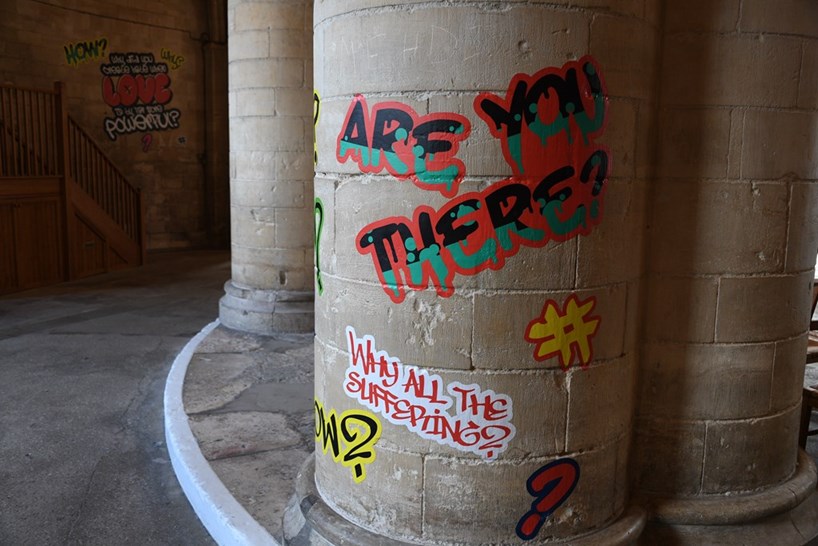 Canterbury CathedralCanterbury Cathedral
Canterbury CathedralCanterbury Cathedral
The Telegraph quoted the Rector of St Bartholomew the Great, Smithfield, in London, the Revd Marcus Walker, who chairs Save the Parish: “The leadership of Canterbury Cathedral may no longer have a sense of the sacred, but millions do and they have a duty to keep this a place of prayer and worship for the rest of us, not turn it into a private plaything of the elites.”
The cathedral leadership lacked “pious awe and respect for the sacred”, the GB News presenter Emma Trimble suggested. A statement from the cathedral acknowledged the adverse comments, but said: “Others were quick to speak of their admiration for the installation, its artistry, and emotional punch.”
The Dean said: “There is a rawness which is magnified by the graffiti style, which is disruptive. There is also an authenticity in what is said because it is unfiltered and not tidied up or sanitised.
“This exhibition intentionally builds bridges between cultures, styles, and genres, and, in particular, allows us to receive the gift of younger people, who have much to say, and from whom we need to hear much.”
Writing in the i Paper on Monday, he rebutted accusations of “vandalism”. “We could easily have rendered the questions to God as medieval style calligraphy, or in Times New Roman, neatly hung on canvas within the cathedral, but they would likely have gone unnoticed and unremarked upon, with few if any choosing to engage with the questions of faith and meaning at their heart.
“Rather than be distracted by the aesthetics of the graffiti lettering, I hope that people will want to think deeply about the questions posed within the artworks, and experience a sense of meaningful encounter that we want all who come to the cathedral to have.”
Jacquiline Creswell, who was arts curator at Salisbury Cathedral for 12 years, says of her work: “Churches have employed the visual arts for centuries, to celebrate their faith and communicate its truth and beauty. This can also be a medium for discussing and exploring that faith by providing a catalyst for including others into the discussions.”
In an interview in 2022, she said: “By reaching out to the divine with personal inquiries, individuals may find comfort, clarity, and direction amidst life’s uncertainties.”
The installation will remain in Canterbury Cathedral until 18 January.

